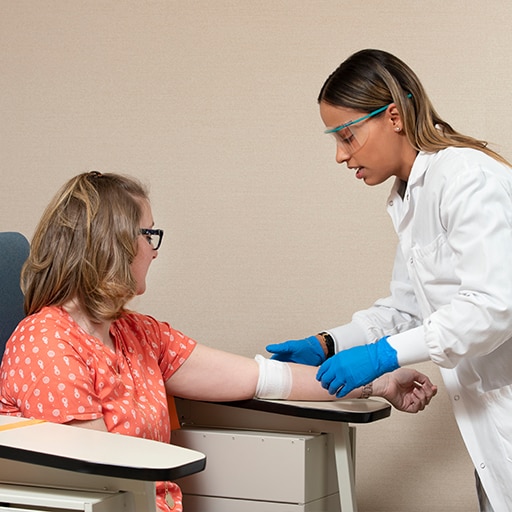The 15-Second Trick For Northeast Medical Institute - New Haven Campus Phlebotomy Course & Cna Class
The 15-Second Trick For Northeast Medical Institute - New Haven Campus Phlebotomy Course & Cna Class
Blog Article
The smart Trick of Northeast Medical Institute - New Haven Campus Phlebotomy Course & Cna Class That Nobody is Discussing
Table of ContentsFacts About Northeast Medical Institute - New Haven Campus Phlebotomy Course & Cna Class UncoveredLittle Known Facts About Northeast Medical Institute - New Haven Campus Phlebotomy Course & Cna Class.The Main Principles Of Northeast Medical Institute - New Haven Campus Phlebotomy Course & Cna Class Unknown Facts About Northeast Medical Institute - New Haven Campus Phlebotomy Course & Cna ClassAll about Northeast Medical Institute - New Haven Campus Phlebotomy Course & Cna ClassAll About Northeast Medical Institute - New Haven Campus Phlebotomy Course & Cna Class
The use of such devices should be accompanied by other infection prevention and control techniques, and training in their use. Not all security gadgets apply to phlebotomy. Before picking a safety-engineered device, users should completely explore readily available tools to identify their appropriate usage, compatibility with existing phlebotomy practices, and efficacy in safeguarding staff and people (12, 33).For setups with low sources, cost is a motoring aspect in procurement of safety-engineered gadgets. Where safety-engineered tools are not readily available, skilled use of a needle and syringe is appropriate.
labelling); transportation problems; interpretation of outcomes for scientific monitoring. In an outpatient department or clinic, offer a committed phlebotomy work area containing: a tidy surface with two chairs (one for the phlebotomist and the other for the patient); a hand laundry container with soap, running water and paper towels; alcohol hand rub. In the blood-sampling area for an outpatient department or center, give a comfy reclining couch with an arm rest.
All about Northeast Medical Institute - New Haven Campus Phlebotomy Course & Cna Class
Ensure that the indications for blood tasting are plainly defined, either in a written procedure or in recorded directions (e.g. in a laboratory kind). Whatsoever times, follow the methods for infection prevention and control listed in Table 2.2. Infection prevention and control techniques. Collect all the tools needed for the treatment and place it within secure and easy reach on a tray or trolley, ensuring that all the things are plainly visible.
Present yourself to the patient, and ask the client to specify their full name. Examine that the laboratory type matches the patient's identification (i.e. match the patient's details with the lab type, to make sure exact recognition).
Make the patient comfy in a supine placement (if feasible). The person has a right to reject an examination at any time before the blood tasting, so it is crucial to make certain that the client has recognized the treatment - PCT Courses.
Some Known Incorrect Statements About Northeast Medical Institute - New Haven Campus Phlebotomy Course & Cna Class
Extend the person's arm and inspect the antecubital fossa or forearm. Locate a capillary of an excellent size that is visible, straight and clear.
DO NOT place the needle where blood vessels are drawing away, because this boosts the possibility of a haematoma. The blood vessel needs to be noticeable without applying the tourniquet. Locating the capillary will certainly help in establishing the right size of needle. Use the tourniquet about 45 finger widths above the venepuncture site and re-examine the capillary.
Specimens from main lines bring a danger of contamination or erroneous lab test results. It is acceptable, however not ideal, to draw blood samplings when very first introducing an in-dwelling venous gadget, before linking the cannula to the intravenous fluids.
About Northeast Medical Institute - New Haven Campus Phlebotomy Course & Cna Class
Allow the area to dry. Failing to allow sufficient contact time enhances the danger of contamination. DO NOT touch the cleaned up website; specifically, DO NOT position a finger over the capillary to lead the shaft of the revealed needle. It the website is touched, repeat the sanitation. Do venepuncture as follows.
Ask the individual to develop a hand so the veins are more noticeable. Get in the capillary quickly at a 30 degree angle or much less, and remain to present the needle along the capillary at the simplest angle of access - Phlebotomy Classes. When sufficient blood has been collected, launch the tourniquet prior to taking out the needle
Northeast Medical Institute - New Haven Campus Phlebotomy Course & Cna Class - An Overview
Take out the needle carefully and use gentle stress to the site with a tidy gauze or completely dry cotton-wool sphere. Ask the patient to hold the gauze or cotton woollen in position, with the arm prolonged and raised. Ask the individual NOT to flex the arm, due to the fact that doing so causes a haematoma.

The Best Strategy To Use For Northeast Medical Institute - New Haven Campus Phlebotomy Course & Cna Class
Do not press the syringe plunger since extra stress raises the risk of haemolysis. Where possible, keep televisions in a shelf and relocate the rack towards you. Inject downwards right into the ideal coloured stopper. DO NOT remove the stopper due to the fact that it will certainly release the vacuum cleaner. If the sample tube does not have a rubber stopper, inject extremely slowly into the tube as reducing the pressure and speed utilized to move the sampling reduces More Info the threat of haemolysis.

Report this page